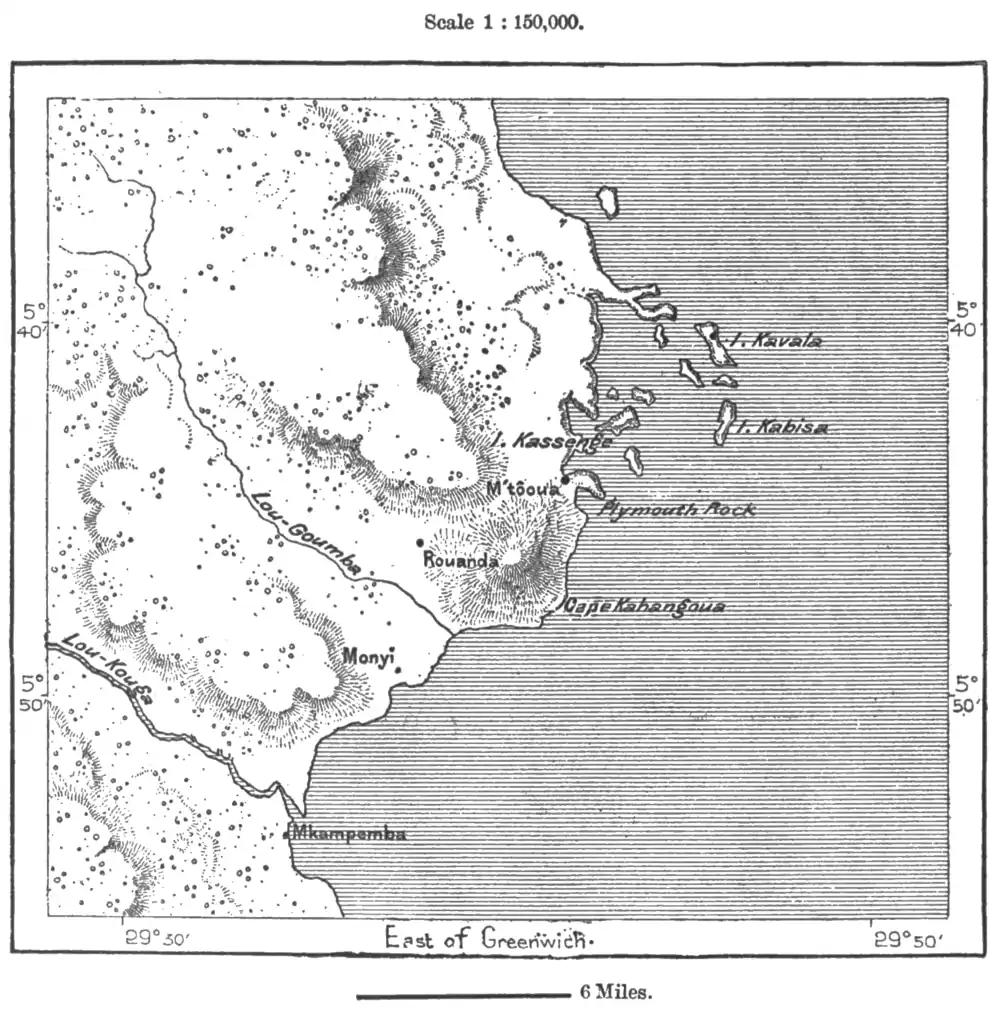460
WEST AFRICA.
in Africa, producing potteries, mats, cooperage, wicker-work, arms, implements iron and copper ornaments. Ruanda, the capital, situated in a plain to the north of the Lu-Kuga, contains at least four hundred huts disposed in regular wide streets, which are carefully scavangered. Stakes erected at intervals and surmounted by two-headed human effigies remind the people to look both to the past and future, to honour their forefathers' tutelar deities of the place, and at the same time love their children, future defenders of the nation.
Since 1885 a European village has stood on the islet of Kavala near a little insular group fringing the coast north of Cape Kahangwa. The English missionaries

have made choice of this station on account of its salubrity and the excellent harbour developed between the island and the mainland. Kavala is at present the European naval station and dockyard on Tanganyika, and also carries on an active trade with the natives.
The Congo from Lake Langhi to the U-Banghi Confluence.
The Upper Congo basin proper, below the Lua-Laba, Lua-Pula, and Lu-Kuga confluence, described by Livingstone as a land of supreme beauty, is occupied